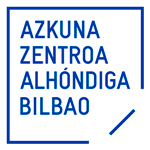
MANUEL VILAS
LITERATURA
Barbastro, 1962. He is one of the main Spanish poets and narrators of his generation. In 2016 he published his Poesía Completa (Complete Poetic Works).
1980-2015, in the editorial Visor. He has won the most prestigious poetry awards that are given in Spain, such as the Jaime Gil of Biedma, the city of Melilla, or the Generation of the 27. Among his poetry books, worth special mention are the titles Resurrección (Resurrection, 2005), Calor (Heat, 2008) y El hundimiento (The Sinking, 2015), all published by Visor. He is the author of the novel España (Spain, 2008), Aire nuestro (Our air, 2009), Los inmortales (The immortal, 2012), y El luminoso regalo (The bright gift, 2013), all published by Alfaguara. In 2015 he edited the book of short tales SetecProjectientos millones de rinocerontes (Seven hundred million rhinoceros, Alfaguara). He is the author of the novel biography Lou Reed era español (Lou Reed was Spanish, Malpaso, 2016) and of the travel book América (Círculo de Tiza, 2017). In 2018 he published the book Ordesa that became a best seller in Spain, with over one hundred thousand copies sold, and contracted in over 20 countries. Ordesa was the book of the year in many media outlets in Spain, such as “Babelia”, “La Vanguardia”, y “El Mundo”, he won the award Fémina for the best foreign novel published in France. In October 2019 Manuel Vilas was a finalist for the award Premio Planeta with the novel titled Alegría.
Share:
My Project has the city of Rome as its gravitational centre, but I don’t want it to be the only one. The idea is that all of Italy symbolises a narrative space of rendition, a stronghold and of an inner castle. That is why to do my Project, I will need to travel from Rome to some other Italian cities, with the idea of that journey being told by the protagonist of my novel.
The provisional title of the novel is Belleza (Beauty). The narrative approximation of beauty needs a literary space. It needs the narration and the introspection of Roman space. But together with Rome, there are six other cities and environments that I would like to visit, with the idea that these other six spaces widen the ideological and moral flow of beauty.
It is the narration of an autobiographic story of an evolved fascination for the beautiful manners in which to understand matters, to understand all that substantiates individual reality and social reality.
From the Roman space, I will travel (I detail this in the chapter of production) to these six cities and their surroundings: Florence, Turin, Bari, Genoa, Bergamo and Agrigento. They are six cities for which I have a literary interest. I want to spend at least one week in each one of them: walking through their streets, their spirit and be able to capture the fantastic and literary of these cities, that will be as a continuation of the vision of Rome. As if Rome was extended, for the protagonist of my novel, to these other cities.
My literary project in the Spanish Royal Academy in Rome was very fruitful. There were some interesting circumstances; the most relevant consisted in how my original Project was transformed into a constant dialogue that I have maintained with the city of Rome. What should be mentioned of my original project is how it suffered a literary displacement. Initially, the approach had a narrative nature, and the objective was to write a novel. Unexpectedly, poetry gradually imposed itself.
My way of working consisted of going through the city of Rome (there is also a chapter dedicated to Florence), walking its streets, visiting its museums, its centres of gravity, and later transform those experiences into literature. My plan consisted of going out every day on a search for the essence of the city. I used to walk between 3 and 4 hours a day, and I built different itineraries. My project was also based on the knowledge of the ordinary, everyday life of the city of Rome, the life of the people, the life in the bars, the shops, outside, on public transportation, etc.
My purpose was to get to know the city, to learn it, as if I was learning a language. My main challenge was to dominate its urbanism, its proportions, and its mysteries. All cities have mysteries.
Also, to live in a building such as that which hosts the Spanish Royal Academy in Rome had its literary version in my work. It is a very peculiar building; its historical meaning is porous.
I am very happy with the end result, and I believe that my work has been fertile.
